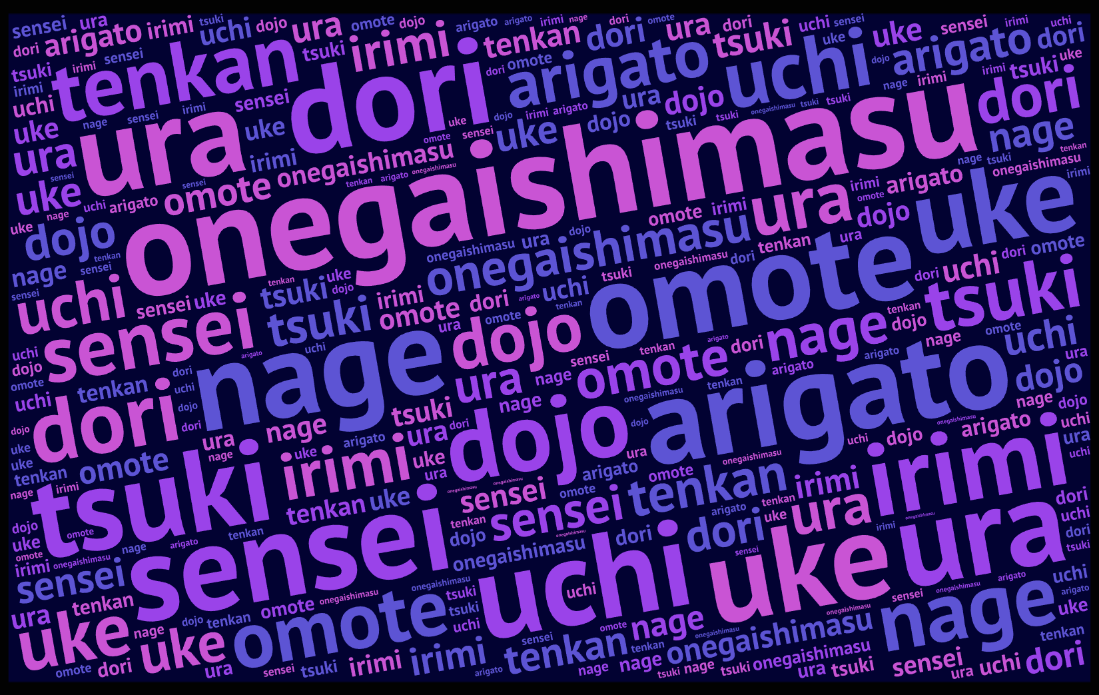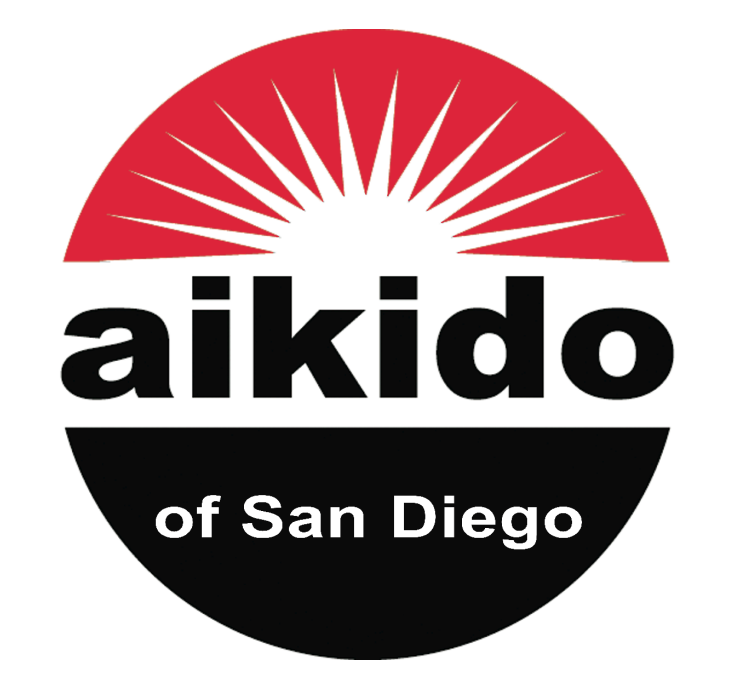[An introduction to my Words posts, if you haven’t read it yet.]
Everyone’s first few days (weeks? months?) of training can be disorienting and overwhelming. You need to learn how to dress yourself, how to sit, how to stand… Acck! You also hear a lot of new words – Japanese terms and phrases. When I was hearing them for the first few times I couldn’t even make sense of them enough to remember them so I could look them up later.
Here’s a huge tip: Almost every dojo, including ours, has a list of common terms in the dojo handbook! Be sure to look there – it’s very handy. Ours can be downloaded as a PDF from the Membership page of the Aikido of San Diego website.
For my first Words post, here are some you will hear in every class. They are mostly the same from dojo to dojo. You’ll be saying them often, too. Here goes:
Onegaishimasu
[OWN-ah-GAH-ee-shee-mahs Note that the “u” at the end is silent. A good way to remember it is that it sounds a little like “Oh my gosh, a mouse!” To help with spelling, remember that it starts with “one”.]
You will hear and say this at the beginning of class, when Sensei and the class all bow to each other, and when you approach another student to ask them to train with you (you both say it). I’ve heard several interpretations of it. Whatever the exact translation, in practice it is a polite request which functions as “would you please train with me?”
Domo arigato gozaimashita
[DOE-moe ahr-ee-GAH-toh GO-zah-ee-MASH-ta When I have heard native speakers say it, it sounds like there is a comma after domo, like this: “Domo, arigato gozaimashita.”]
Everyone says this when Sensei and the class bow to each other at the end of class. It means “thank you very much for what you just did.”
Arigato means thank you.
Domo is an polite, formal intensifier, like adding “very much” in English, except it comes first (like muchos grácias in Spanish).
Sometimes, informally, you will hear people just say “Domo” by itself. In that context it’s used like “thanks.”
Gozaimashita places the thanking in time, relative to the action. Roughly it’s used like, “for something you’ve already done.” Here you are thanking someone for having just trained with you.
You may have also heard “gozaimasu” [go-ZAH-ee-mahs, silent “u”]. That’s used when thanking someone for something they haven’t done yet. Like “Would you pick up some milk at the store? Thanks!” It’s also used for something that was just done, sometimes, so you will hear people saying it at the end of class, too.
About the Author — Linda Eskin
Linda Eskin began practicing Aikido in 2009, at age 46. From the beginning she was inspired to explore how Aikido is taught and learned. In addition to mentoring adults, and now teaching a weekly Focus on Fundamentals class for students of all ranks, she assisted in the children’s programs for over eight years.
Linda loves Aikido both from the technical perspective, and as a practice of awareness and embodiment. She is completing her forthcoming book, Aikido to Zanshin – 26 Essays on the Martial Art of Peace.
Linda’s passion is encouraging people to begin, and supporting new learners of all ages.
Linda trains with Dave Goldberg Sensei at Aikido of San Diego, in California, and holds the third black belt rank, sandan.





